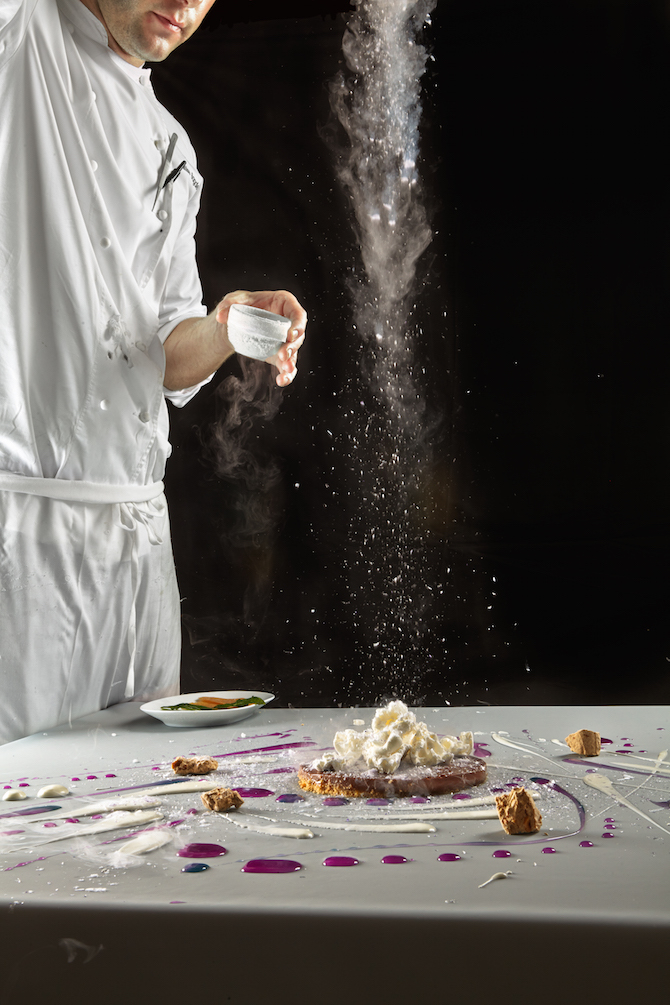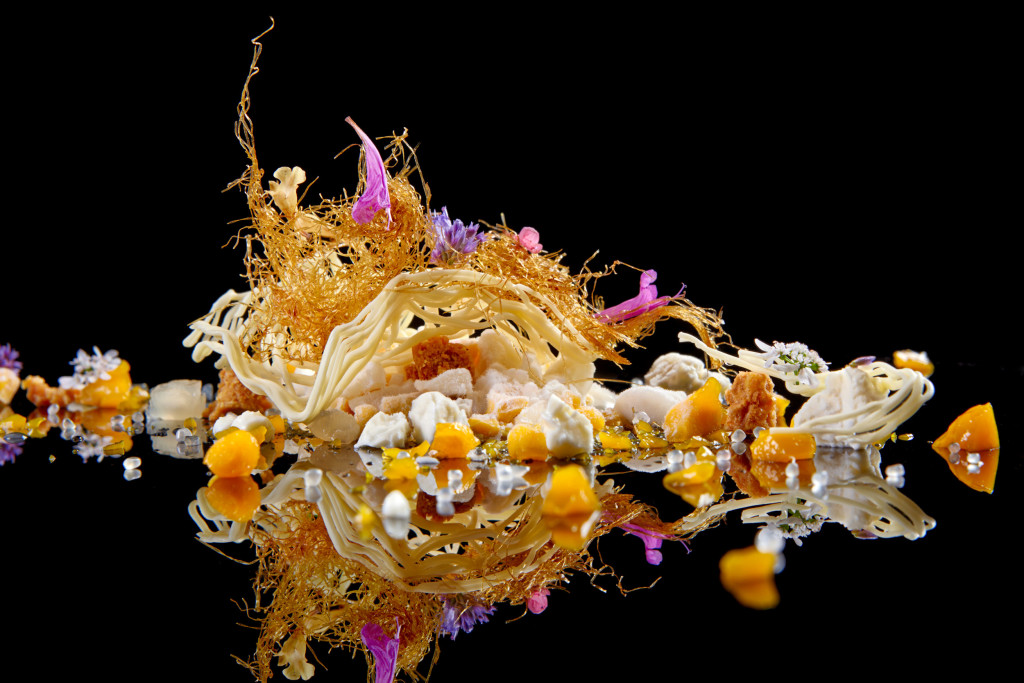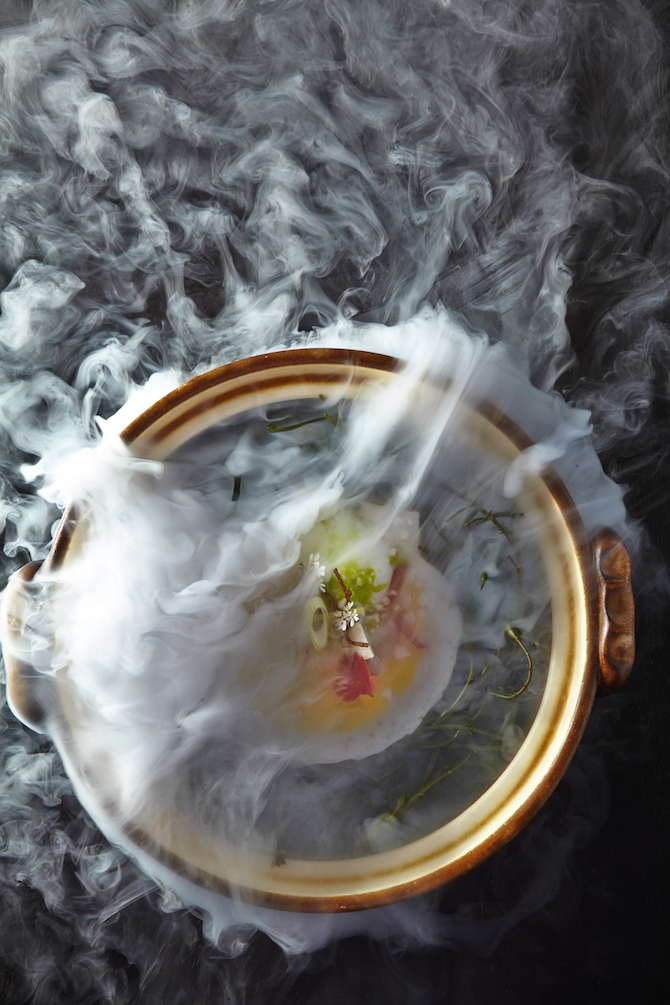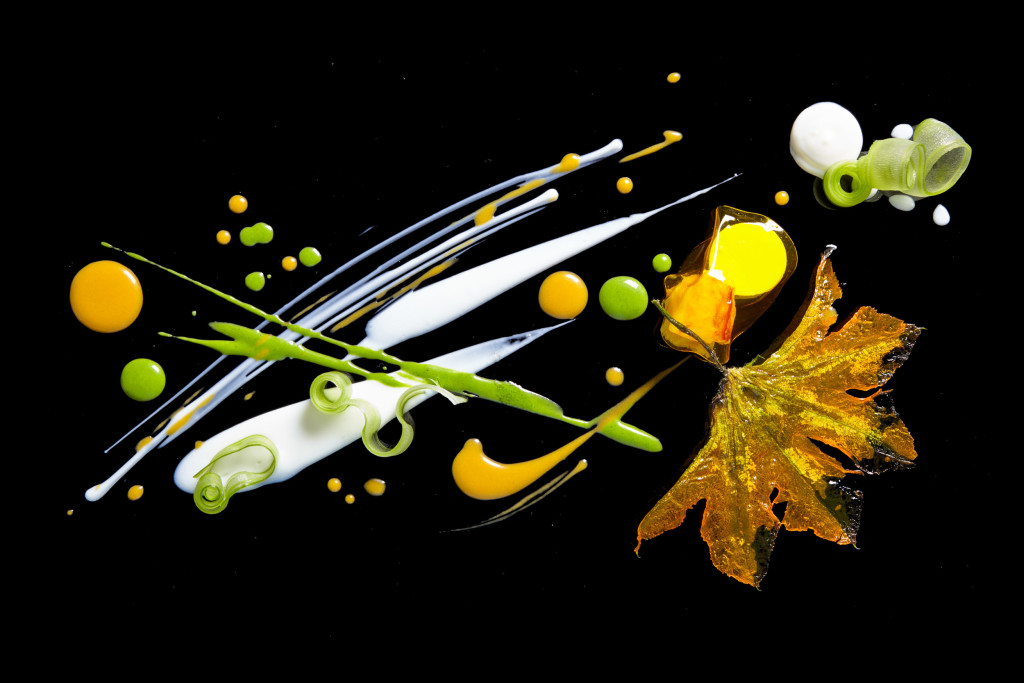When you bite into that warm, gooey brownie, have you ever wondered why it tastes so good? If you have, you are not alone. In fact, an entire field of study exists to answer questions like that one. It is called neurogastronomy. And it is awesome.
I know you’re probably thinking, “Neurogastronomy? What does that mean, and why should I care?” Professor Charles Spence of Oxford University, one of the fathers of neurogastronomy, is here to explain to us what this science is and why it matters to foodies.
According to Spence, neurogastronomy is “about sticking people in brain scanners and seeing which parts of the brain light up as they taste, smell, or think about food.” In other words, flavor perception is multi-sensory, and neurogastronomy plays on these senses in ways that manipulate your food experience. At its core, it is all about understanding how the senses work together to make the foods that we know and love taste so darn good.

Photo courtesy of alinearestaurant.com
One restaurant currently leading in neurogastronomy is Alinea in Chicago, Illinois. Alinea is more often described as a sensory experience than a restaurant. The restaurant has mastered the art of creating food that appeals to every sense and has been universally praised for its innovative approach to modernist cuisine.
In a recent review of the restaurant, critic Bill Addison calls Alinea, “Unexpectedly sensual and surprising.” More and more restaurants are following in Alinea’s footsteps, utilizing gastronomy to attract diners (and make big $$$).

Photo courtesy of alinearestaurant.com
Still a little confused? Check out the ways that each sense reacts when we interact with food:
Sight
Our first experience of food is with what we see on the plate. Our sight determines what we expect our food to taste like. Sight even changes the way the food tastes once we eat it. For instance, if we see a deeply colored drink, we expect it to have a deeper flavor.
Touch
Texture can change the way that food tastes. While soft textures bring out sweeter, creamier notes, rough textures make a dish saltier, crunchier, or more bitter. This can manifest itself in shape as well.
A ool, real-world example: Nestle found that people react more positively to round pieces of chocolate than to square pieces because they fit the shape of people’s tongues, creating the creamy, melting chocolate sensation in the mouth that we all love.
Sound
We not only eat with our tongues, but we also eat with our ears. Spence’s studies reveal that hearing background music at a restaurant can affect the flavor of food. He noted that if you are listening to Italian music while eating Italian food, you might think the food tastes more authentic.
A cool, real-world example: Häagen-Dazs has taken this finding and created a new app that allows you to listen to classical music while your ice cream softens, creating a more sensual ice cream-eating experience.
Smell
Imagine the smell of homemade chocolate chip cookies wafting from the kitchen to your living room. You know how you can almost taste the cookies before even putting one in your mouth?
Smell is the sense that is most closely tied to taste, as we smell the food we eat while we are chewing it. If something does not smell good, we will not want to eat it.

Photo courtesy of alinearestaurant.com
Why should you care? Well, this new trend has the potential to drastically change our dining experiences. Chefs have started to concern themselves with “off-the-plate dining,” which involves not only creating tasty food, but also food that appeals to our other senses.
More broadly, neurogastronomy has the potential to change our relationship with food. In a society focused on getting food as fast and as cheaply as possible, we have become more concerned with convenience than experiencing the food we eat.

Photo courtesy of alinearestaurant.com
More meals are eaten on the go, in cars, and at desks than at dinner tables. Neurogastronomy has the potential to slow this trend by helping us reconnect with our senses, with our food, and ultimately, with each other.
The next time you sit down to eat dinner, I challenge you to try to think about how all five of your senses are involved. The more sensory reactions you can name, the better your food will taste, guaranteed.


